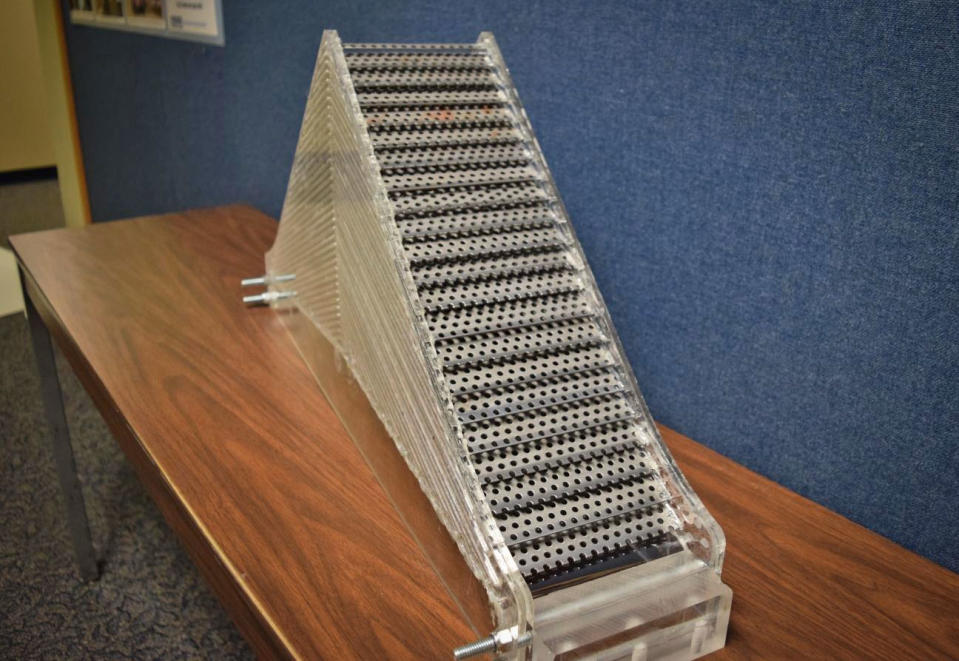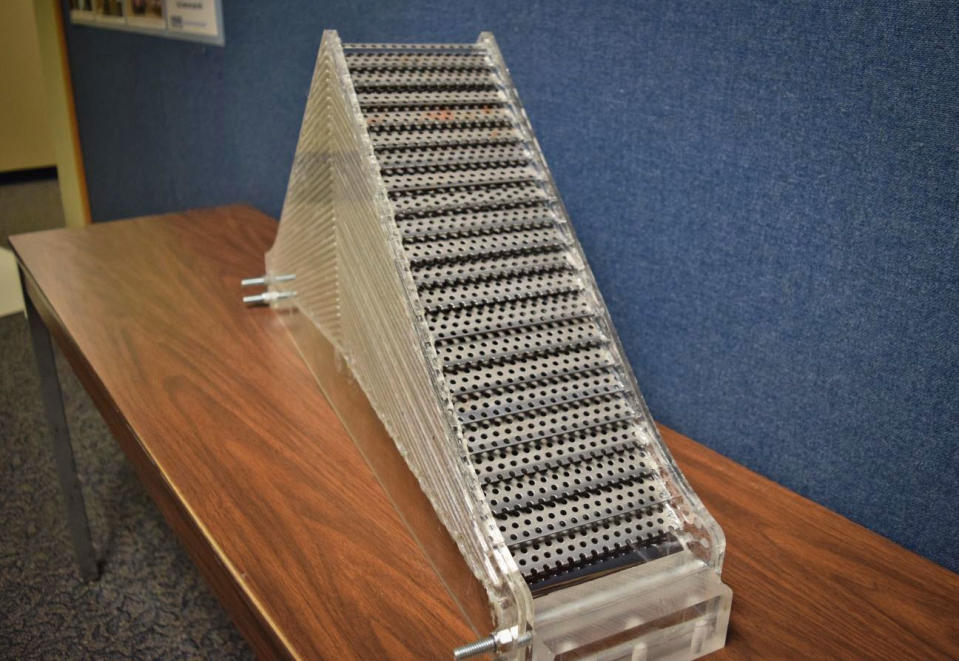Researchers create an acoustic cloaking device that works underwater
It could shield objects from sonar.
The concept of a cloaking device has a lot of appeal and though we're far from being able to make 3D objects invisible to the human eye, researchers continue to develop new ways in which to shield objects from other sorts of detection. At the Meeting of the Acoustical Society of America taking place this week in Minnesota, Penn State University researchers described a design they've developed that allowed a 3-foot-tall pyramid made from perforated steel plates to deflect sound waves in a way that could make it invisible to instruments like sonar.
The team engineered a metamaterial -- a synthetic material that typically features properties that don't occur naturally -- that could bend sound waves in a particular way. So far, most of these sorts of materials have been developed in order to deflect sound waves in the air, but the researchers, led by research associate Amanda Hanford, designed their material to be used underwater -- a much more difficult task since water is denser than air. In their experiments, the researchers showed that their material effectively cloaked itself when submerged.
There are a number of other groups working on developing cloaking devices and some strategies include manipulating electromagnetic waves to make curved objects appear flat, creating materials that can evade radar detection, rerouting reflected light waves with nanoantennas and using ceramic-studded Teflon that can modulate light waves.
"These materials sound like a totally abstract concept, but the math is showing us that these properties are possible," Hanford said about her research in a statement. "So, we are working to open the floodgates to see what we can create with these materials."



